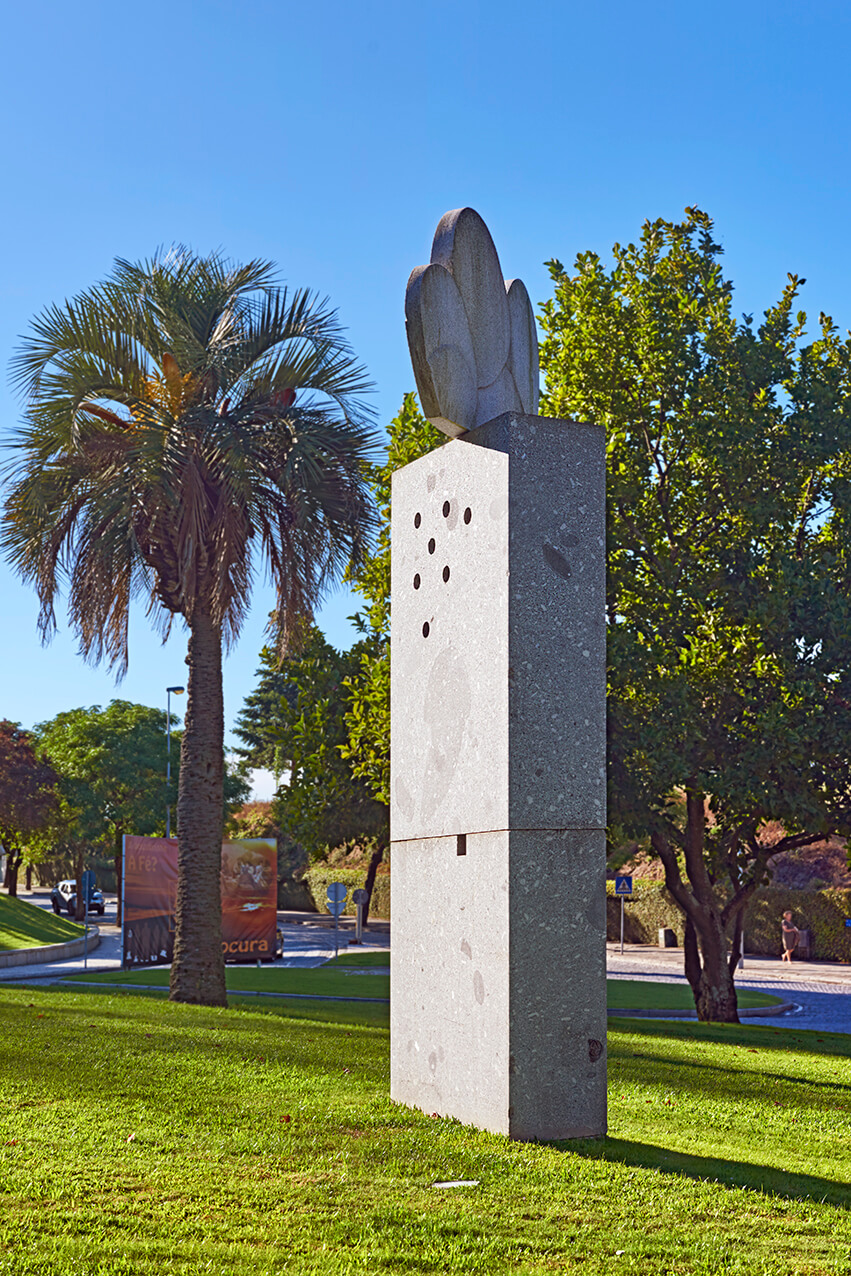
18
The cloud of Santo Tirso, 1997
Federico Brook
Granite
«Placid mountains meander through the air, or tragic cordilleras cast a pall, overshadowing the day. They are what we call clouds. And their shapes are often strange and rare. Shakespeare observed one once. It seemed to be a dragon. That one cloud of an afternoon still kindles in his words and blazes down, so that we go on seeing it today. What are the clouds? An architecture of chance? Perhaps they are the necessary things from which God weaves his vast imaginings, threads of a web of infinite expanse. Maybe the cloud is emptiness returning, just like the man who watches it this morning.»
Jorge Luís Borges, the celebrated Argentinean poet, wrote this poem (here in a translation by Richard Barnes), drawing inspiration from the cloud sculptures of his friend and compatriot Federico Brook, the best known of which is precisely a life-size bronze hand, cast from Borges’ actual hand, gently supporting a small cloud (the poet’s imagination?) with the tip of his fingers.
Santo Tirso’s cloud takes our thoughts away from gravity-ridden worldly things in order to appreciate the lightness and delicacy of a cloud (stylised almost like a pop icon) resting at the top of a granite column. With this gesture, Brook redefines the position of our skyline and makes us raise our heads towards the sky, as if he were encouraging us to imagine the clouds. Jorge Luis Borges, his friend, once wrote that Shakespeare saw a cloud that looked like a dragon… What shapes can we find in the clouds we see?




